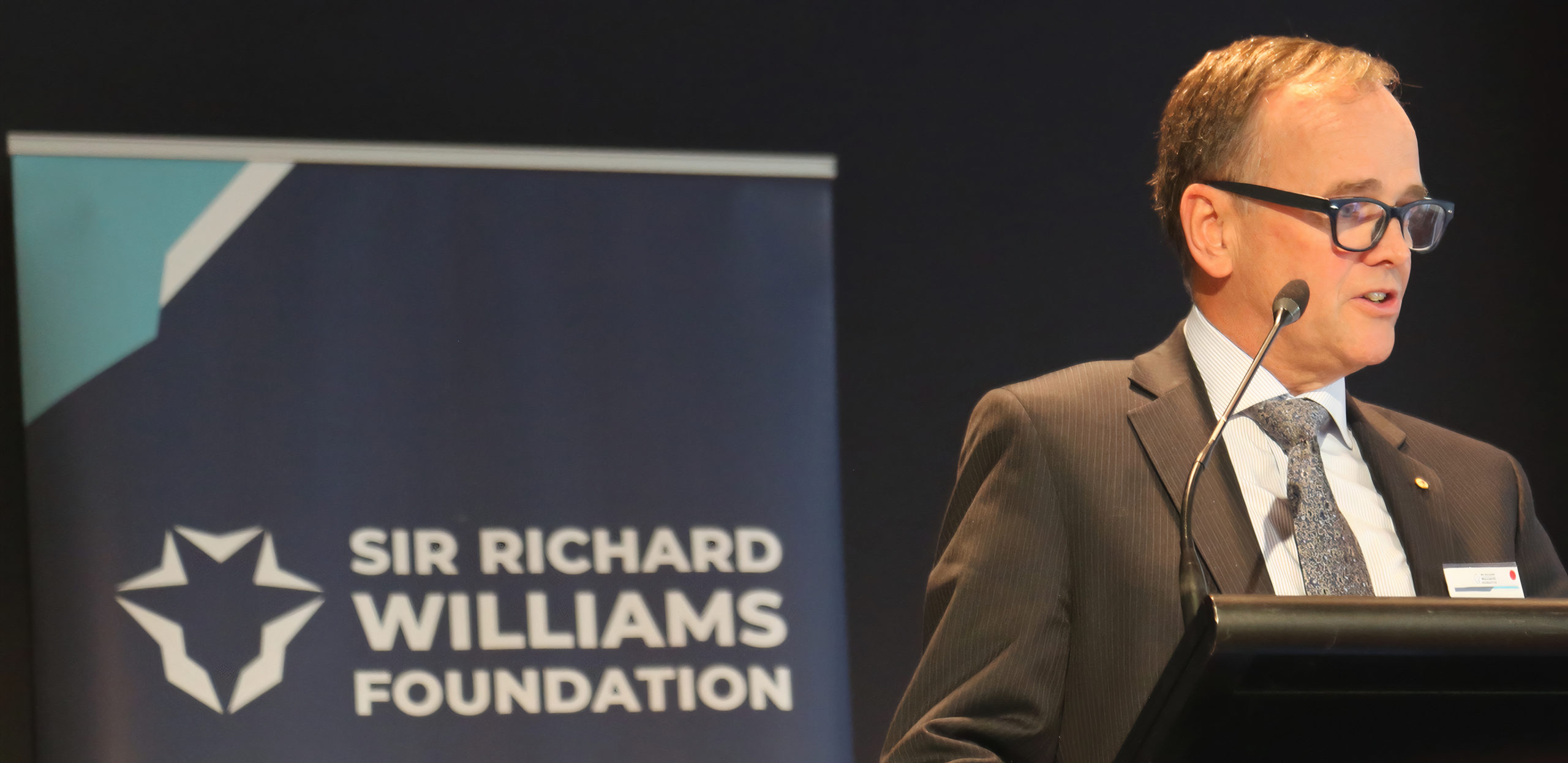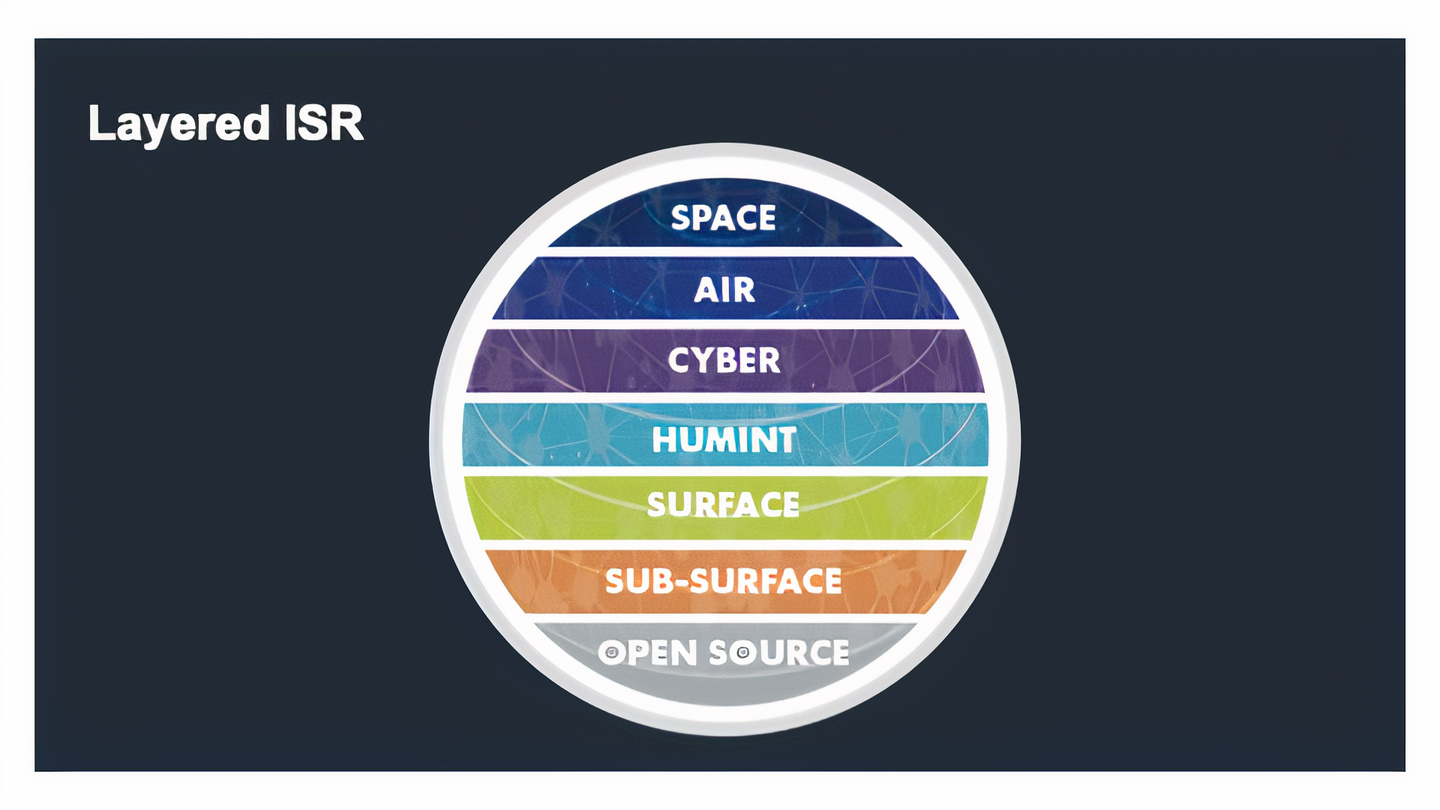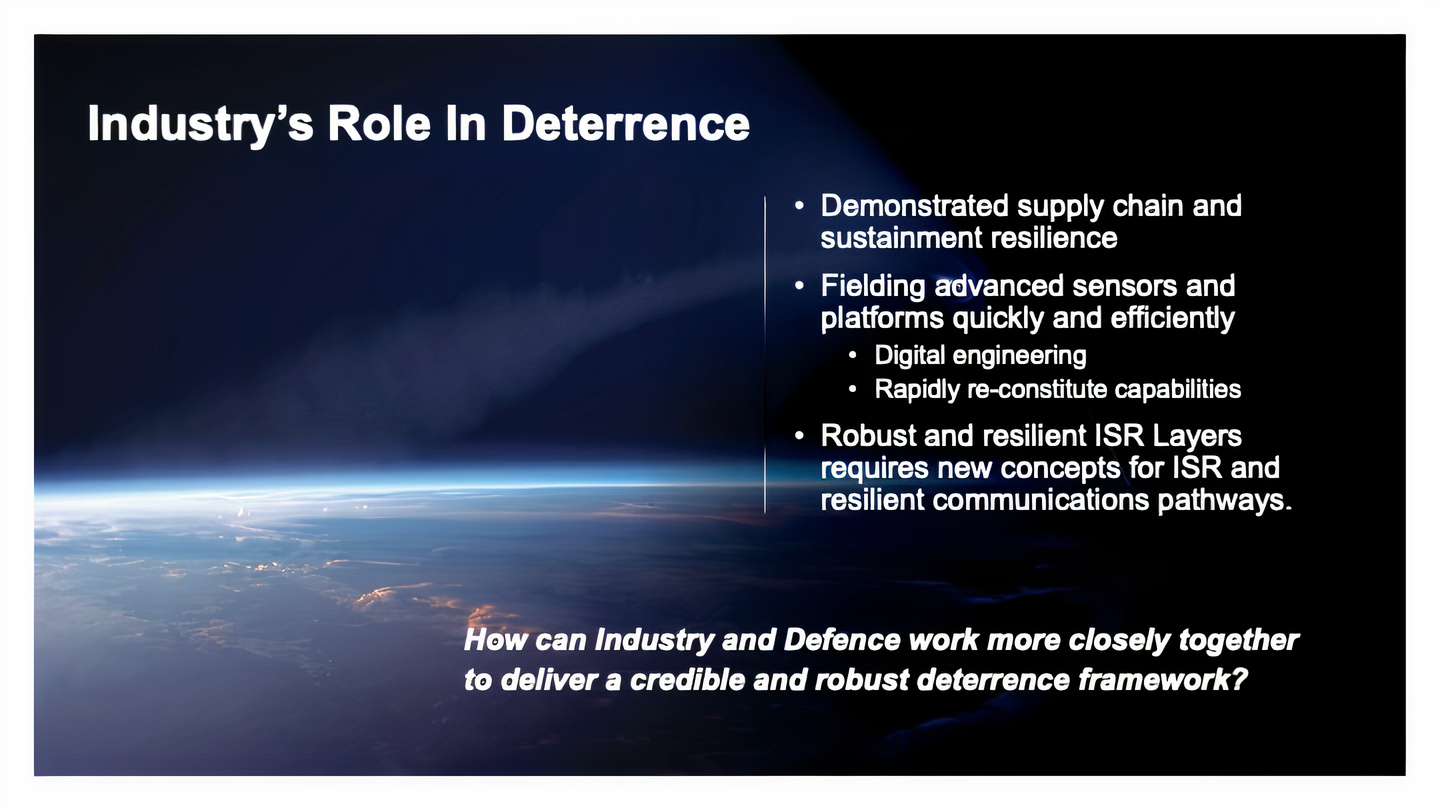ISR and Deterrence: Or How Detection is a Key Part of the Deterrence Effort
At the recent Williams Foundation Seminar held on 30 March 2023, the focus was upon the challenge of building an Australian deterrence posture. One element of that effort was highlighted by Jake Campbell, Triton Program Director, Northrop Grumman Australia. Campbell is an experienced RAAF officer with many years of experience in the ISR area.
I first met Jake when he had been appointed along with the current chief of the RAAF. Air Marshal Chipman, as the co-heads of Jericho. There initial focus was very much in line with Jake’s current work on Triton and his thoughts on “deterrence by detection”.
He started his presentation by highlighting his focus as follows: How does Australia’s detection capabilities contribute to the overall deterrence package?
His answer was that it depends on where and how that capability was exercised by the operational forces and I would add the ability of the political authorities who are working with the operational forces to get the deterrent effect. Put in other terms, it is the challenge of having the right military tool kit combined with the practice of the art of statecraft.
Campbell argued that “deterrence can only be successful with a clearly defined and communicated outcome and with the ability to use a carefully balanced mix of necessary options to deliver that outcome. What we are really talking about is deterrence by design.”
With this laydown of the concept of deterrence, he then highlighted the perspective of one analyst which emphasized the following: “Adversaries are less likely to commit opportunistic acts of aggression if they know they are being watched constantly and that their actions can be publicized widely.”

Detection is part of the deterrence package but for it to work as such, it must be linked to capabilities for credible action and there needs to be a track record of a state actually responding in an appropriate manner to a threat once detected.
This is how Campbell characterized the above point: “Deterrence is only possible and effective if Australia has a clearly defined and communicated deterrence outcome.” Campbell cautioned that “deterrence by detection only works if it is linked to a credible deterrence response option, and a willingness to respond on order to deliver a combined deterrence effect.
He expanded on that point as follows: “What is Australia’s balance of interests that drive the deterrence outcomes? And ultimately what is Australia deterring? Is it an attack on Australia? Our sea lines of communication? Is it our offshore network infrastructure, our critical onshore infrastructure? Is it an attack on our region? Whether that’s the Southwest Pacific or Southeast Asia or law of the sea, or an attack on our allies? Are we trying to deter an attack on Taiwan? Are we trying to deter a superior adversary, a near pear adversary or a rudimentary adversary?”
Campbell argued that when focused on deterrence by detection, the role of layered ISR changes in the various operational phases of what one might consider a deterrent process or perhaps continuum. The slide below was how Campbell visualized the phases or continuum. He put his assessment this way: “While deterrence by detection can deliver strategic effects, deterrence is also effective in phase zero and phase one operation by leveraging quality ISR information when carefully coordinated with the public and classified use of that information.
He put his assessment this way: “While deterrence by detection can deliver strategic effects, deterrence is also effective in phase zero and phase one operation by leveraging quality ISR information when carefully coordinated with the public and classified use of that information.
“In early phases, the full force of diplomatic, economic, and public information efforts can be brought to bear. Once combat operations have commenced, the scope of those options are significantly reduced and the effectiveness of deterrence by detection is clearly significantly reduced.
“Detection operations can serve to suppress the effectiveness of gray zone operations by enabling public and international community awareness. And when necessary, the ability to use non-military responses.”
He warned that “there is a risk that we will collect too much, or low fidelity data. To be effective Australia and our allies need better ways to turn the collected data into actionable intelligence….
“And there is a risk that the intelligence community won’t make the important information public. Balancing the need to protect versus the need to create deterrence will be challenging, but we need to do so for deterrence to be effective.”
In his assessment, Australia is building out the kind of layered ISR capability necessary for the art of deterrence by detection. He visualized the notion of layered ISR as follows: He underscored that “critically layered ISR must be backed by a responsive sophisticated intelligence capability that can exploit the ISR product quickly to enable selective public release of information and shine a light on aggressive gray zone tactics or conventional force posture changes.”
He underscored that “critically layered ISR must be backed by a responsive sophisticated intelligence capability that can exploit the ISR product quickly to enable selective public release of information and shine a light on aggressive gray zone tactics or conventional force posture changes.”
Campbell concluded that the evolution of layered ISR and its role in deterrence was a key area for industrial-government collaboration, cooperation and successful delivery of ongoing capabilities.
“Deterrence resilience will depend upon industry’s ability to field advanced sensors and platforms quickly and efficiently. Digital engineering has much to offer here. But we also need to find better ways to rapidly reconstitute capabilities. And I’m not just talking about low end capabilities; we need to be able to reconstitute our high-end capabilities quickly. Industry also has a role in making the ISR layers more robust through new concepts for ISR, backed by resilient communications pathways. And I encourage defense and the services to include industry as you start to develop new thinking.”

